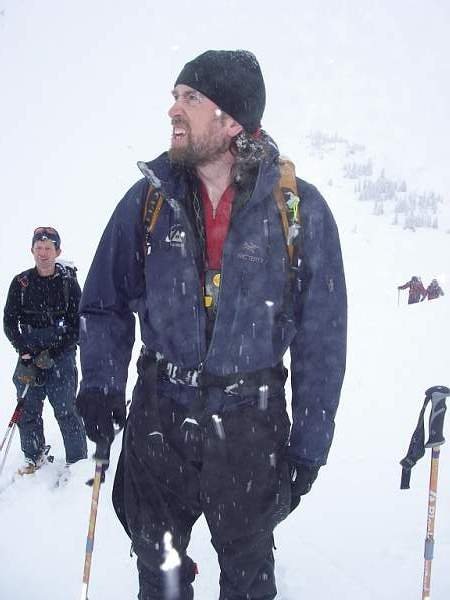Hypothermia Kit Conundrum

Our SAR team maintains several hypothermia treatment kits, and without going into too much detail they contain equipment for treating and transporting hypothermic patients. There various sorts of shelter, specialized waterproof subject bags, tarps, heating equipment, stoves etc.
One of the things we’ve always had in these kits is a sleeping bag, which is what I want to talk about.
There are various qualities our SAR team wants in a sleeping bag. The first is that it has to be one size fits all, since we can’t be selecting a bag based on the size of the subject each time we go out to rescue someone. The second thing about the size is that there has to be some additional room in the bag for equipment; an injured subject may have splints, IV fluids, heating equipment, hot water bottles, and oxygen. We also need to get in there and check for injuries from time to time. This is why we’ve chosen barrel bags over mummy bags.
The bag needs to be warm, and to be able to handle moisture since we live on the west coast and the weather is wet a lot of the time. For this reason we favour a synthetic bag since down, although legendary in the cold, is miserable once it loses it’s loft. We’ve gone for a -10C bag because the bag is not the only warmth we’re providing, and it’s a good balance point for bulk and utility.
Finally, we’d like the bag to be light because we hate carrying heavy things, to compress into a small volume because we have a lot of other things to carry, and a helicopter is only so big. In this area I’m not clear what the best product is; if anyone has suggestions I’d be happy to hear them.
Usually you end up with a compromise; you can’t have light, low volume and high warmth all at the same time, especially in a synthetic bag.
Which leads me to the conundrum; when you’re buying a sleeping bag manufacturers and sales people tell you without fail that you should always store the bag uncompressed. This is recommended for down, although it can regain some of it’s loft, but this was stressed even more for synthetic bags. SAR teams need to store equipment in a “ready to go” state, so our bags are compressed and stored that way in various kits and caches all over the place.
The only possible way to store the bag uncompressed would be to have a lot of them, and rotate them in and out of kits on a regular basis. I don’t know about you, but I have other things to do than to monitor the state of my sleeping bag stock.
So the question, readers, is this; if you’re on a SAR team how do you balance out these things? Is there some sleeping bag that you’d recommend as being particularly well suited to SAR work, and for inclusion in a hypothermia kit? How do you handle the storage issue, and do you find that keeping the bag compressed for long periods of time degrades it’s usefulness?
Any feedback can come in the comments below, or you can email me via the contact page.

You forgot to add the need for zippers; the more the better (also more likely a feature in barrel bags) The ability to unzip the lower half of the bag but keep most of the bag still zipped up is needed. The three zipper configuration which lets you zip the bag up but still have flexible unzip sections is the best. You need access to the lower or more commonly middle sections to assess injuries, monitor patient vitals, access IV lines, vent heat-treat exhaust, add fresh hot packs, etc…..
Also on the subject of treating hypothermia, I’ve recently played around with these…
http://www.techtradellc.com/content/ready-heat-ii-blankets
A great product for a light weight hypothermia kit when combined with a sleeping bag. 6hours of heat and enough heat that you don’t want it direct on skin. way lighter than a heat-treat kit and probably more reliable.
after re-reading your post I realized you said “we need to get in there” which implies the need for zippers. Disregard.
It’s a good point, more zippers is better as any child of the 80s knows.
Helli Mike,
We have a life blanket. http://www.lifeblanket.com/
One advantage is that it has a liner. Make’s cleaning up as easy as replacing the liner.
It snaps together to allow for access.
Also comes with a snap in super sized extender for the real big subject.
We have a heat pac on our list for fundraising this fall. I haven’t found much discussion on it’s use. Your thoughts?
R
We are considering the LifeBlanket as well. Do you use it instead of a sleeping bag, or in addition to one?
Currently we have one of the heavy fleece lined “Norwegian military” hypothermia bags; they are great but very heavy. We were going to replace these with the LifeBlanket but we can’t see giving up on the sleeping bags.
We also have several “heat pac” units, like what George imports; http://www.emergco.com/home/HeatPac
These things are really awesome. We’ve had a subject ask for us to turn it down because they were too hot. We did have a problem with a batch of the charcoal cartridges once; there was something wrong with them and they would no burn. You also have to make sure the cartridge package is sealed because I think moisture kills them. But when they work, they are the best.
We haven’t had to use a sleeping bag as off yet. Between the stretcher, clamshell and first aid kit we have at least 8 thermal blankets for additional wrapping. Once we add the HeatPac it should be more than plenty. (Jinxed myself now!) We do have one in the trailer just in case!
Another thing about the lifeblanket, is that it also comes with a 6 handle transfer pad. Found it to be very handy for body recoverys as well! Karl is a great guy to deal with too
R
I’m not a SAR volunteer, but when talking to a member of the Central Avalon Ground SAR Team (http://cagsar.com/index.php) in Newfoundland he showed me their “Hypothermia Bag”.
similar to this one: http://wiggys.com/moreinfo.cfm?Product_ID=61
At Fernie SAR we use the Blizzard Survival Bag, they also have blankets for easy access to subjects injuries. Not so much a hypothermia bag per se but a very small, light and cheap bag both for volunteers personal kits and subjects. We have had members spend a night in them on top of a ridge in below freezing temps, probably not ideal on there own for -30C but up to -10C with clothing not bad. We get them from Rampart Corp and MEC also sell them and are about $40CAD. Used by RAF search and rescue in the UK (http://www.blizzardsurvival.com/section.php/3/ff60d6e53b369a18a6656f9b67b06b0d)